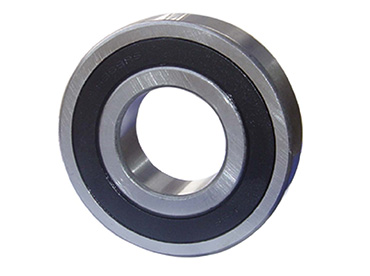Electric motor bearings play a crucial role in the smooth and efficient operation of electric motors. Proper care and maintenance are essential to ensure their longevity and prevent premature failure. Here are some tips to extend the life of your electric motor bearing:

Proper Lubrication:
Regular and adequate lubrication is essential for the health of motor bearings. Follow the manufacturer's guidelines for the recommended lubricant type and interval for greasing. Over-lubrication can be as harmful as under-lubrication, so it's crucial to get the balance right.
Monitor Lubrication Levels:
Regularly check the lubrication levels of the bearings. If your motor has a sight glass or grease fitting, use it to ensure proper lubrication. Maintaining the right lubricant level helps reduce friction and heat generation within the bearings.
Cleanliness and Contamination Control:
Keep the motor environment clean and free from dust, dirt, and debris. Regularly inspect the motor's housing and surrounding area for potential contaminants that could enter the bearings. Implement effective seals and shields to protect the bearings from external pollutants.
Avoid Overloading:
Ensure that your electric motor is not subjected to excessive loads or overloading. Running the motor beyond its rated capacity can cause additional stress on the bearings, leading to premature failure. Use a motor that matches the power requirements of your application.
Monitor Vibration Levels:
Periodically monitor the vibration levels of the motor using specialized tools. Unusual vibration patterns may indicate potential bearing issues. Address any abnormal vibrations promptly to prevent further damage.
Temperature Control:
Monitor the operating temperature of the motor, as excessive heat can lead to bearing failure. Ensure proper ventilation and cooling to maintain the motor within its recommended temperature range.
Regular Inspections:
Schedule regular inspections and maintenance checks for your electric motor. Include bearing inspection as part of the routine. Look for signs of wear, damage, or misalignment. Early detection of potential issues can prevent major problems down the line.
Proper Mounting and Alignment:
During installation or repair, ensure that the bearings are correctly mounted and aligned. Proper mounting and alignment reduce unnecessary stress on the bearings, improving their performance and lifespan.
Training and Expertise:
Ensure that those responsible for maintaining the motor bearings have proper training and expertise. Knowledgeable maintenance personnel can perform tasks correctly and identify potential problems before they escalate.
Follow Manufacturer's Recommendations:
Always adhere to the manufacturer's guidelines and recommendations for bearing maintenance, lubrication, and service intervals. Following these guidelines will help ensure that the bearings perform optimally and have an extended lifespan.
By implementing these best practices for electric motor bearing maintenance, you can significantly extend their life, reduce downtime, and enhance the efficiency and reliability of your electric motor system. Regular care and attention will pay off in the form of smoother operations and reduced maintenance costs in the long run.
评论
发表评论